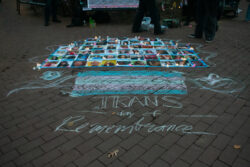If your name is Vincent Gray, you had a good day Tuesday. You had a good day because it was unemployment day, that magical time each month when the District’s jobless numbers come out. For you, the numbers look great.
The D.C. unemployment rate dropped to 8.1 percent in December—a post-recession low—from 8.6 percent just a month before. This wasn’t a normal drop in unemployment, because it happened even while the labor force expanded. Usually in this recovery, decreases in the national unemployment rate have been accompanied by thousands of people leaving the job market, but not this one. Considering that you came into office with an unemployment rate of 10 percent, things are looking good. Maybe this will put the focus back on the economy, and not that pesky shadow campaign from 2010 the Feds are still investigating and you refuse to talk about.
If you were Vince Gray, you’d be excused for thinking that way, because the numbers are actually fairly heartening, especially in Anacostia: the Ward 8 rate dropped to 17.7 percent—still high, but improved from the 25 percent observed in January 2011. Gray’s other electoral strongholds in Wards 5 and 7 improved as well, which bodes well for his chances in the crowded Democratic primary on April 1.
But that analysis, while sufficient for superficial politicking and sound bytes, ignores some economic realities lurking just under the surface. D.C. may be adding jobs, but the jobs we already have aren’t paying what they should. Looking at wage increases in the District paints a much different picture of the city’s economy. Put simply, rich folks are getting richer faster than the rest of us can catch up.
In 2011, food service workers in Washington made an average of $27,550 per year, according to the Bureau of Labor Statistics. In 2012, the latest localized information available, their average wage had dropped to $27,490 per year. Contrast that with management occupations in the District, which saw more than a three percent increase in compensation, from $125,800 to $129,610.
Some low-wage workers fared a bit better. Those in the official BLS grouping called “Building and Grounds Cleaning and Maintenance Occupations” got an average raise of 2.67 percent, but only from $29,890 to $30,690. And some high wage workers didn’t make a lot more. The average Business/Financial worker in D.C., for instance, saw her income increase less than two percent, from $85,770 to $87,410, but of course that doesn’t include stock options and other company goodies.
However, it turns out those are among the most optimistic outliers. Again and again, low wage District workers actually lost money over the year in question. Production and manufacturing workers got a cut from $49,750 to $49,710. Transportation and Material Moving Occupations went from $40,940 to $40,370. Construction workers made more money, but only 1.1 percent more—from $54,320 to $54,930—putting their raise well under the rate of inflation. Likewise for Healthcare Support workers, who earned 0.85 percent more, from $31,590 per year to $31,860 on average. Compare all of that to the perennial D.C. industry—legal occupations—which saw a pay increase of 4.24 percent in one year alone, rising from $138,160 to $144,010.
It’s important to not put too much stock in wage numbers from a one-year period alone,
but the BLS numbers from 2011-12 do seem to align nicely with data available from earlier years. Besides the astonishing inequality and poverty-level wages for so many D.C. workers, what the statistics show us is an economy that’s not as healthy and dynamic as the Mayor would have voters believe.
Employment and wealth may be increasing in D.C., but the hundreds of thousands of service and manufacturing workers clearly aren’t feeling the benefits. In fact, they’re struggling more than ever, often losing money not just in real terms, but nominal ones as well. Especially when we start thinking about stock options, property value, and other ways the upper class builds and retains wealth, the image of economic divergence becomes even more stark. The recent minimum wage increase Gray signed will certainly help the lowest-wage workers, but it can’t change the fundamental calculus of an economy that doesn’t work for everyone.
That picture of a sick economy should make Gray supporters rethink his tenure. He’s ridden the wave of D.C.’s economic growth so far without much forceful critique, but if these trends continue much longer it won’t just be in New York where insurgent politicos talk about a “tale of two cities.”
Manipulate statistics with Gavin at gbade@georgetownvoice.com.





